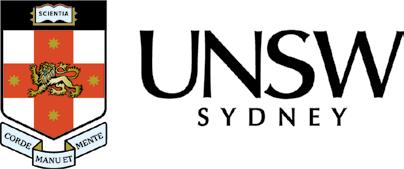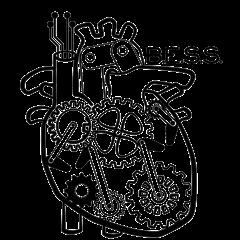with STEM™ CAREERS JOB KIT



Invent solutions to real-world challenges in medicine and healthcare




Whether you’re developing artificial organs, creating next-gen prosthetics or working on assistive technologies, as a biomedical engineer, you’ll be helping people live longer, healthier lives.
I swapped to biomedical engineering after starting an electrical engineering degree. I was studying electrical conduction in the heart, and suddenly realised the extraordinary impact my engineering skills could have if I applied them to healthcare.
Now I use my skills every day to solve real-world health problems and improve lives.

The field of biomedical engineering is expanding rapidly and globally. We’re seeing sweeping advances in areas like personalised medicine, tissue engineering, bionic body parts and robotic surgery. We’re using engineering to push the boundaries of what’s possible for human health.
I’m especially proud of UNSW’s pioneering work in healthcare apps and neural interfaces, including contributions to the development of Australia’s first bionic eye. Imagine being able to restore vision to someone who has lost it.
At UNSW, we’ve been working in biomedical engineering for 50 years. Through our School of Biomedical Engineering, and the adjacent Randwick Health and Innovation Precinct, our students benefit from world-class research and direct exposure to real-world health innovation.
You’ll work with clinicians and industry partners to design, test and implement real-world solutions. This means you’ll graduate with technical skills, and also with the ability to think across disciplines and work in diverse teams.
The opportunities for biomedical engineers really are as broad as healthcare is complex. You could be inventing smart implants, coding interactive health apps, creating better imaging systems, or working on wearable health tech and medical AI.
As a biomedical engineer, you won’t just study the human body. You’ll develop skills that empower you to improve the quality of human life. You’ll have a career that’s dynamic, meaningful and future-focused.
If you’re curious, want to innovate, and care about helping others, you’ve absolutely arrived at the right place.
Nigel Lovell, Scientia Professor Biomedical Engineering, UNSW Co-Director, Tyree Institute of Health Engineering
Biomedical engineering fuses biology, technology and creativity to improve health and save lives
Scan here for more alumni stories
Biomedical engineers design, build, test and improve technologies to save and transform lives.



You could work with robotics, chemistry, nanotechnology, coding, mechanical systems, wearable tech and more. A degree in biomedical engineering could take you anywhere. Just ask these UNSW biomedical engineering alumni:
Anne Simmons, Professor UNSW
Jevan Arulampalam, Project Manager Corin Group
Prashan Paramanathan, CEO and Founder Chuffed.org
Rylie Green, Professor of Bioelectronics Imperial College London
Antonia Workman, Firmware Engineer Cochlear Ltd
Kevin Ambosta, Field Service Engineer Abbott
Implantable defibrillators and the bionic ear
Hip implants and replacements
Crowdfunding platform for social causes
Neuroprosthetics to restore lost function
Epilepsy monitoring
Electrophysiology devices for heart health
Choose biomedical engineering at UNSW and you’ll get hands-on experience with healthcare and industry professionals, flexibility, practicality, cutting-edge research labs and access to the ChallENG program, which offers real-world projectbased learning. You’ll learn from researchers leading the way in brain-computer interfaces, bionic limbs, medical robotics and more.
Specialise from the start with a four-year Bachelor of Engineering (Honours) Engineering)(Biomedical at UNSW.
Want to diversify your career and study options? Combine your biomedical engineering degree with a second degree in science, arts, commerce and more.
Thinking of being a Master? Get more engineering in your life with a UNSW Bachelor of Engineering (Honours) / Master of Biomedical Engineering combo, or go for a Bachelor of Engineering (Honours) (Materials Science & Engineering) / Master of Biomedical Engineering
Biomedical engineering is a great choice if:
You love medicine and healthcare.
You enjoy solving problems and being innovative.
You want a job that improves lives.
You love learning about new tech, like 3D bioprinting, smart biosensors and personalised medicine.
You want to apply your skills to help with big health issues, like heart disease, cancer and motor neurone disease.

How much will you make as a biomedical engineer in Australia*? On average, $139K a year.

UNSW’s engineering faculty consistently ranks as the best in Australia. You’ll get practical experience, access to global research, industry placements and flexible double degree options.

*Source: SalaryExpert.com
Scholarships to watch
Get a head start by choosing these subjects in high school:
UNSW Women in Engineering Scholarship
UNSW Engineering Rural Scholarship
Populations are aging, tech capabilities are expanding, healthcare is entering a revolution, and biomedical engineers are needed to make it all happen.
More than 580,000* jobs will open up in healthcare and social assistance in the next ten years.
*Source: Jobs and Skills Australia
research: True or false?
Take this true-or-false quiz to discover how UNSW biomedical engineering is making an impact. (Answers in the margin.)
UNSW researchers…
• invented a microchip that powers bionic eyes. T F
• are using AI to discover new biomarkers for cancer. T F
• created an app that has reduced hospital re-admissions by 50%. T F
• created an app to help people with Parkinson’s disease walk. T F
• are inventing heart implants that use silk to regrow heart tissue. T F

Katelinh Nguyen says biomedical engineering is all about people
katelinh nguyen graduate engineer cochlear
Ever seen Big Hero 6? The hit animation stars a healthcare robot, and it inspired Katelinh Nguyen to study biomedical engineering.
“I knew biomedical engineering would let me be creative, hands-on and work on innovative solutions to improve quality of life,” she says.
Now a graduate engineer at Australian medical device giant Cochlear, famous for its hearing implants, Katelinh says she’s applying the skills she learned at uni to change lives.
“I’m contributing to developing technologies that improve quality of life, which is incredibly meaningful to me.”
Katelinh chose to study at UNSW, and says her lecturers inspired her every step of the way.
“Many of the opportunities I pursued, from casual jobs to my research thesis and extracurricular programs, came from conversations with lecturers and the encouragement they provided.”
One such opportunity was SPLAT –Supporting Play by Adapting Toys – a social initiative Katelinh co-founded with fellow UNSW students.
SPLAT leads hands-on workshops that teach people how to modify

off-the-shelf toys for individual needs, something that is usually prohibitively expensive.
“SPLAT is deeply close to my heart,” Katelinh says. “I believe every child deserves the right


Katelinh showcased SPLAT in the Peter Farrell , UNSW’s most prestigious startup idea pitch competition, and won the People’s Choice and Faculty of Engineering Award. She’s now taking SPLAT global, and has travelled to the Solomon Islands and Tonga to help communities tailor toys for kids with special needs.
“I feel incredibly grateful to have found a project that aligns with both my values and my skills, and even more fortunate to have worked alongside a supportive and passionate community of students who share the same vision.”
Katelinh says her advice for new biomedical engineering students is to take every opportunity. “Stay curious and open. Some of the most meaningful opportunities come from putting yourself out there and asking questions.”
I came to really appreciate the meaningful impact biomedical engineers can make”
Justin comes from a family of engineers, which made enrolling in biomedical engineering a no-brainer. “I compared a few different universities but chose UNSW biomedical engineering as it was globally recognised as an excellent program,” he says.
While at uni, Justin not only excelled in coursework, he also signed up for a string of extracurricular activities. “Life at UNSW Biomedical Engineering was amazing,” he says. His highlight? Becoming the president of the UNSW Biomedical Engineering Students’ Society, or BESS.
“I met some of my closest mates there,” he says. “It gave me the opportunity to further connections in the industry.”
Justin says the real-world experience he got at UNSW set his CV up for success. One standout was his Honours thesis, where he worked on a heart-lung machine that responds to unique patient characteristics.
“My thesis supervisor went above and beyond by leveraging close relationships with St Vincent’s Hospital.”
While at UNSW Justin also put his hand up for internships –including time at medical tech company Corin and denture manufacturing clinic Southside.
In his final semester, he scored his first job: at medical devices company Stryker. “I was a project engineer designing surgical theatres across the country and then an R&D staff engineer,” he says.

Today Justin is part of Stryker’s Digital, Robotics and Enabling Technologies team, looking at how tech can drive better patient care.
“We pioneer medical tech development and have real-world impact in shaping patient outcomes and experience.”
I test and validate new ideas before the company then develops a fully-fledged product”

Day in the life 7am
Calls with US colleagues. 8am
Check emails and organise tasks. 9am
Meetings with my software engineering and project management team as well as data scientists and manufacturing engineers. 12pm
Lunch! “My team is pretty social, so we typically coordinate together.” 1pm
Time to delve deeper, meeting with everyone from clinicians to our marketing champions. 4pm
Time to wind down with admin.
5.30pm
Go for a run. “I’ve only recently moved to Brisbane, so I’ll often try new places to eat in the evenings!”

Get TLC from TCC (YouTube)
Check out the TeleClinical Care (TCC) app, developed at UNSW, which allows thousands of patients to have their health remotely monitored by professionals, all from the comfort of their home.
Co-design solutions with the people who use them (YouTube)
After his accident, violinist and UNSW student Chadi worked with Tyree IHealthE’s Assistive Tech Hub to co-design a violin he can play one-handed.

Bionic Eye Recipient Sees for First Time in 33 Years (YouTube)
Experience the moment when Larry Hester, who has been blind for half his life, has his bionic eye turned on for the first time.
Paralysed man able to stand and walk with an aid after doctors implant device (Guardian News)
Gert-Jan Oskam was paralysed after breaking his neck in an accident. He can now stand, walk and climb stairs after doctors implanted a device in his brain.
You’re Jake from Avatar.
Do you adopt a human-Na’vi hybrid body to explore the alien world of Pandora? Yes or no?
You’re Marie from Black Mirror’s Arkangel episode.
Do you use an implant to monitor your kid’s medical data and audiovisual feeds? Yes or no?
Smart dental implants, explained What about a tooth implant that generates electricity as you chew?

Artificial Organs –The Future of Tissue Engineering
From lungs to kidneys to hearts, what if 3D printing and tissue engineering could create personalised artificial organs?
What is Biomedical Engineering? (YouTube)
Your questions answered in under a minute. Why study Biomedical Engineering at UNSW? (YouTube)
Hear from people actually working and studying in this field.
Follow @UNSWBESS on TikTok
Millions of views, hundreds of thousands of likes. You’ll love the UNSW Biomedical Engineering Students’ Society TikToks.

Want to work overseas?

To read this job kit online scan here

Check out these biomed engineer job opportunities:
• Senior Process Engineer
Stem cell manufacturing, Cellistic, Belguim
• Device Engineer
Pharmaceuticals, Sandoz, UK
• Senior Design Engineer
Remote healthcare, ADI, Spain
• Research and Development Engineer
Medical devices, Cook Medical, Ireland
• Biomedical engineer
Sensors and bio-signaling, Oura, Finland